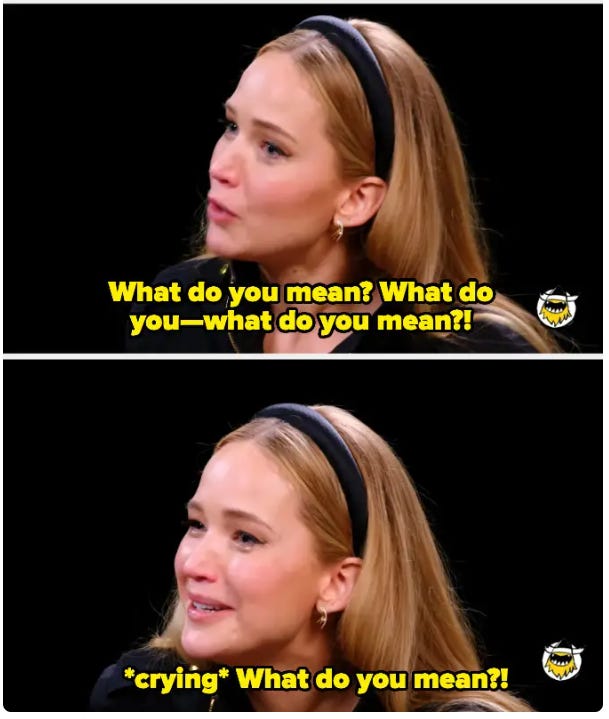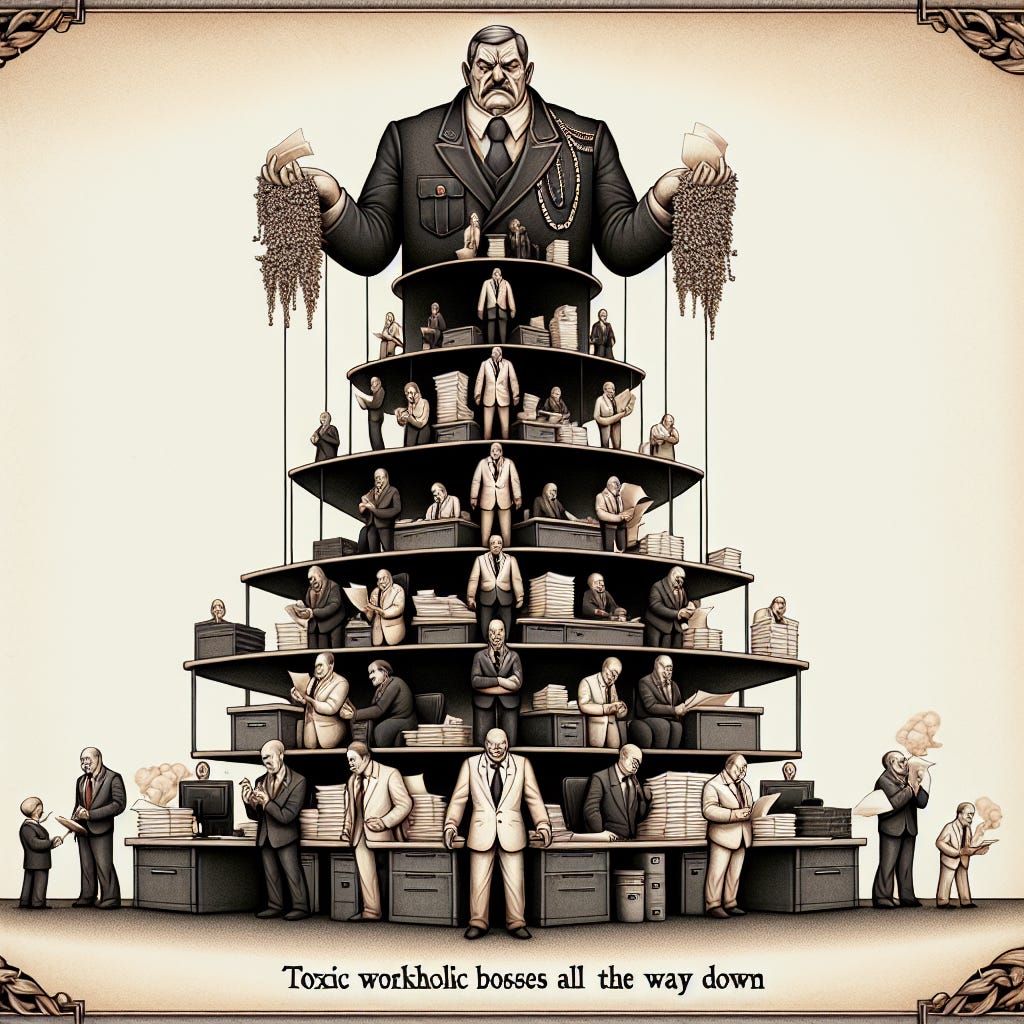What is a Company's Culture?
Peter Drucker said culture eats strategy for breakfast, but how do we define it, much less shape and direct it?
It’s no secret that Covid-19 decimated corporate cultures around the globe, as the virus forced us into our kitchens and living rooms and (for those lucky enough) home offices while we waited out an administration that openly wondered if injecting bleach was the right move. Forced RTO has not, in fact, reinvigorated the lost culture executives thought it might (to say nothing of increasing productivity.) So, righteous brothers and sisters, how do we get back that cultural feeling?
This was one of the questions put to some of us at my agency recently, and despite the brainpower we had in the room, we were having trouble nailing down how to even define the culture we currently had at the company - never mind how to direct such a nebulous and amorphous concept in the direction we wanted to go.
What is Culture?
One of the main problems with trying to infuse the right culture into a workplace is that it is one of the most ill-defined parts of a company. Read any job description and they have some pithy note about their culture or what drives them. Mastercard has a DQ, or “decency quotient.” IBM Consulting has a culture of “evolution and empathy.” Google’s “thirst for technology is a part of everything [they] do.” But whenever I read these phrases, I turn into Jennifer Lawrence on Hot Ones.
Ask five executives what culture means at their firms and you’ll get seven answers from their PR departments. Everyone has a different definition of it, so how can it be a top-down endeavor?
This newsletter sees culture as a multi-faceted part of a company that, by its very nature, is incredibly fluid and could very well mean something different to different people at the company. Its core, however, lies with the rank-and-file employees.
Bottom Up Culture
The first, and probably most important, part of a company’s culture is its people. And because most companies (or, at least the ones running efficiently) are bottom-heavy organizations with fewer and fewer people as you move up, the kind of folks populating the junior levels of an organization will have a ton of influence on the culture. While leadership is incredibly important (and we’ll get to that), the attitudes, behaviors, and habits of entry-level to middle-management employees will be the most voluminous and visible to a company’s consumers.
If the rank-and-file are filled with high-achievers who consistently push innovation and fresh thinking, that’s what most people are going to see and how most people will think of that company. If the junior workforce has shitty attitudes and is not pushing the business forward, that will also be reflected in the company’s image to the everyday consumer.
Top Down Culture
Leaders of a company are the most visible part of the organization, but mostly to the public and other leaders. When I go to Whole Foods I don’t interact with Jason Buechel. When I reluctantly squish myself in the middle seat of Metro North because RTO is ruining everything, Catherine Rinaldi is not there giving me her POV on how many trains to run at what times.
But their influence is palpable on junior employees. If your CEO is a workaholic with no boundaries, their deputies will be the same, and their direct reports will be similar, and so on and so forth. It’s turtles all the way down.
I see this every day at work - not necessarily the workaholic toxicity (though that does exist), but the top-down relationship of culture. Publicis Groupe is the largest holding company in the world by market cap (thanks, Arthur) and hosts a variety of agencies under its tricolor umbrella, all with their own cultures and styles. It is very easy to discern which agency someone belongs to within the Groupe based on their workstyle, and the correlation between their style and their leaders’ styles is quite strong. While I mostly work with other middle managers pushing papers around creating shareholder value, I see it in the more junior folks as well. People hire people like them - more perniciously people who look like them and from similar backgrounds, less problematically people who work like them.
A Company’s Policies
Outside of a corporation’s people, its policies also drive its culture. If a company is particularly flexible about things like RTO and constantly being glued to your devices for work, they’ll get a reputation for work-life balance. If they have substandard parental leave, they’ll get a reputation for not being a great place for workers with families. If a company has a foosball table in their common area, it literally means nothing.

However, this all comes back to the kinds of people who will work there. If you have a mentality that you need to be at your desk to get any productive work done, you’re likely not going to attract the kinds of people who value flexibility. If you have a “Well, you’re only billing 50 hours a week so you’re on the cold list” mentality, you’re going to attract people who don’t value a work-life balance. If you have a foosball table, literally nothing changes.
Purpose
Finally, there is a company’s purpose. Why does your company exist? What is its raison d’etre? What does your work ultimately ladder up to?
We’ve broached the subject of corporate visions in the past, and they’re extremely helpful in motivating a team. They’re also key to culture. Every piece of work product, every meeting, every process should ladder into an overall purpose or vision set at the highest levels of a company. These are the pithy notes about “decency quotient” and “technology thirst” in the job descriptions we pointed out earlier. It’s impossible to portray a corporate vision in a sentence or two, and it begs the question: does culture come from purpose, or does purpose come from culture?
I Know It When I See It
And this finally brings us back to the enigma that is culture - you can’t dictate it, you can’t force it, and you can’t really measure it. It’s like Potter Stewart getting freaky: you’ll know it when you see it.
And that’s what makes culture so difficult to nail down - it’s the essence of a company embodied by its people. The cruelest part of it is that it takes years to build but can be wiped out by black swan macro events (looking at you, Covid) or stubborn missteps (forced RTO on an employee base begging for anything but.)
The best thing a company can do is live by its values and principles, specifically when it comes to hiring, and steadily build up a culture they can be proud of and attract the right kind of talent with.
Grab Bag Sections
WTF MTA: Bringing it back to our original WTFs, we have to talk about the subway again. Two weeks and two derailments - not a good look. It begs the question: Why are we letting subway riders have access to the emergency brake? This is baffling to me. I simply can’t envision a situation in which I - an untrained subway rider - would think I knew better than the train’s engineer about the train’s movement.
Maybe - maybe! - we let people pull it when the train is in the station for something like a medical emergency. But to allow people to simply pull the brake while the train is in motion in the tunnel? Utter madness. I also don’t understand what pulling the emergency brake in the middle of the tunnel would ever accomplish in an actual emergency - all a passenger has done in that situation is made the train immobile in the middle of a dark space that’s harder to get to.
Album of the Week: This week we turn to a singer with an impressive four-octave range who, when she’s not getting caught licking doughnuts, is putting out massively successful pop albums.
Ariana Grande dropped My Everything as her sophomore album in 2014. She had been on my radar simply as someone who dated some of my favorite rappers, but this album had a slew of singles that did quite well and you couldn’t really get away from her in the summer and fall of 2014.
The album itself is mediocre. The best-selling single “Problem” is downright terrible. I think we as a society need to do some soul-searching to understand how we let Iggy Azelia be a thing.
The other songs featuring rappers (“Best Mistake” with Big Sean, “Break Your Heart Right Back” with Childish Gambino, “Hands on Me” with A$AP Ferg) are all imminently skippable. The bright spots are in Grande’s solo songs like “One Last Time” and “Just a Little Bit.” If you pick and choose the right songs, you can see Grande’s talent on display with this album, but you have to be prescriptive about it.
Quote of the Week: “Traditions are the guideposts driven deep in our subconscious minds. The most powerful ones are those we can’t even describe, aren’t even aware of.” - Ellen Goodman
See you next week!








